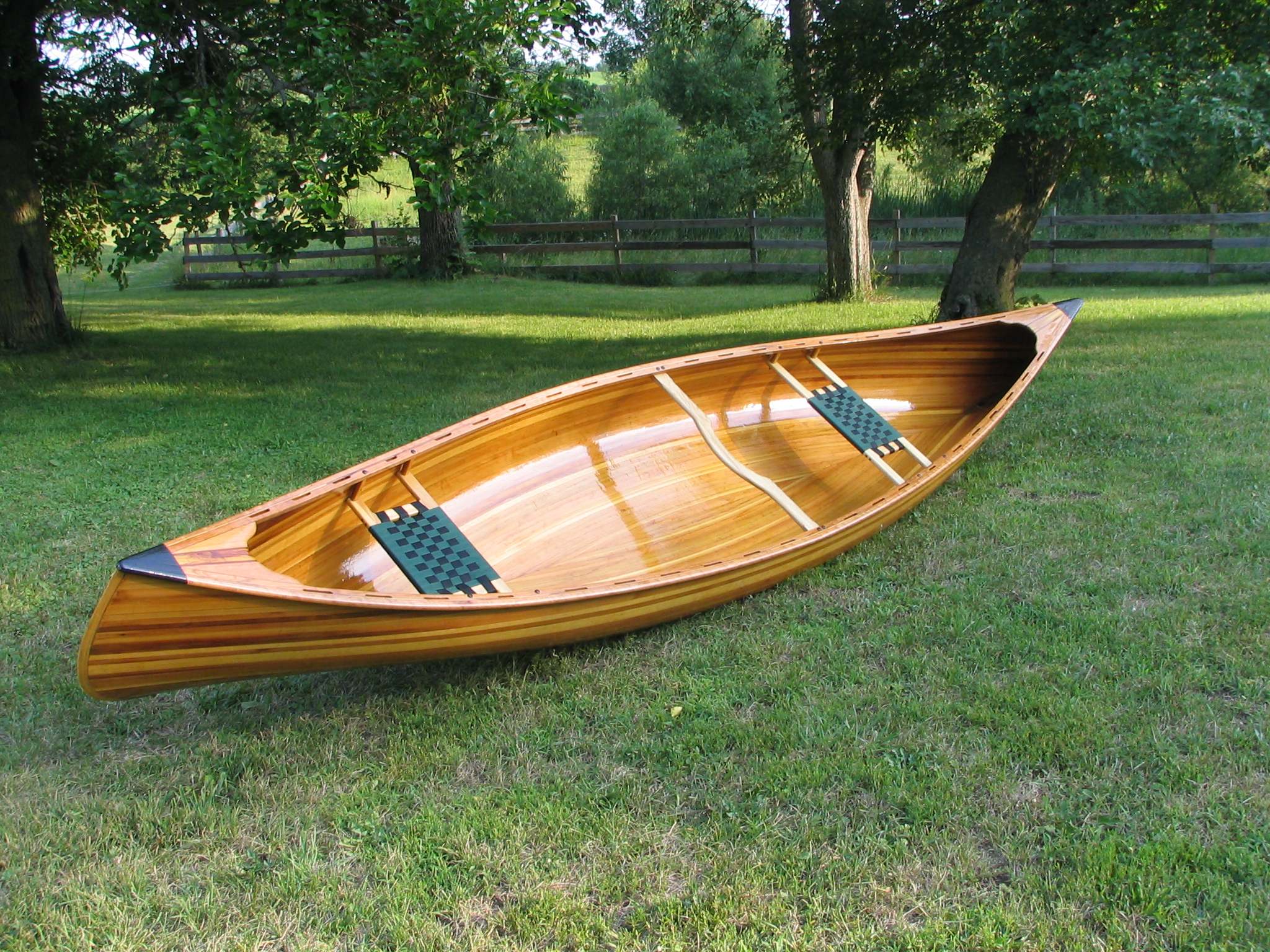Wooden Canoe Plans for Small, Compact Designs

Wooden Canoe Plans for Small, Compact Designs
The allure of a wooden canoe is undeniable. A handcrafted vessel, built with care and skill, carries a weight of tradition and connection to nature. For those seeking a compact, easily maneuverable canoe for intimate paddling experiences, there is a diverse range of small, wooden canoe designs available. This guide explores the characteristics of small canoes, delves into popular plan options, and provides insights into the construction process.
The Appeal of Small Wooden Canoes
Small wooden canoes, typically ranging from 10 to 14 feet in length, offer a unique set of advantages for paddlers:
Maneuverability and Portability
Their compact size allows for easy transport, making them ideal for car-topping and portaging over short distances. They respond readily to paddle strokes, allowing for nimble maneuvering in tight spaces and intricate waterways.
Intimacy and Connection
Small canoes provide an intimate and personal paddling experience, allowing for a closer connection with the water and surrounding nature. They are perfect for solo paddling or leisurely trips with a companion.
Construction and Durability
Wooden canoes, meticulously built with traditional techniques, exhibit exceptional durability. They can withstand years of use and provide a rewarding sense of craftsmanship.
Popular Small Canoe Plans
A wealth of plans for small, wooden canoes exists, catering to various preferences and skill levels. Here are some notable examples:
The "Solo" Canoe
Designed specifically for solo paddling, these canoes are typically around 12 feet long. Their narrow beam promotes efficient paddling and provides stability in calm waters. Plans like the "Solo" by Ted Moore or the "Solo" by Chesapeake Light Craft are well-regarded options.
The "Tandem" Canoe
Tandem canoes, designed for two paddlers, can vary in length from 12 to 14 feet. They feature a slightly wider beam for additional stability and carrying capacity. Popular plans include the "Chesapeake 13" by Chesapeake Light Craft and the "Tinker" by Ted Moore.
The "Pocket" Canoe
Pocket canoes, also known as "weekender" canoes, are incredibly compact, typically around 10 to 12 feet long. Their small size and lightweight construction make them ideal for backpacking and remote paddling. Notable examples include the "Pocket" by Chesapeake Light Craft and the "Pack Canoe" by Ted Moore.
Key Considerations When Choosing Plans
Selecting the right plans requires careful consideration of several factors:
Intended Use
Determine how you plan to use the canoe, whether for solo paddling, tandem adventures, or carrying gear. Consider the type of waters you will navigate, such as calm lakes or rivers with rapids.
Skill Level
Assess your woodworking skills and experience. Some plans are designed for beginners, while others require advanced carpentry expertise. Plan complexity will influence the time and resources required for construction.
Material Selection
Different materials offer different properties. Cedar is known for its lightweight and aromatic qualities, while spruce offers a more durable option. Plan details will specify the recommended wood types and dimensions.
Constructing Your Wooden Canoe
Building a wooden canoe is a rewarding experience, but it requires time, dedication, and meticulous attention to detail. The construction process typically involves the following steps:
- Plan Study and Material Acquisition: Carefully review the plans, understand the construction process, and acquire the necessary wood, tools, and materials.
- Building the Molds: Create molds from wood or other suitable materials to shape the hull's exterior and interior. Molds are critical for ensuring accuracy and symmetry.
- Stem and Ribs: Cut and shape the stem and ribs according to the plan's specifications. These components form the backbone of the canoe.
- Planking: Cut and attach planking strips to the mold, creating the canoe's hull. Use clamps and techniques like steam bending to shape the wood according to the plan.
- Deck and Gunwales: Construct the deck and gunwales as per the plan's instructions. The deck adds structural strength and provides seating space.
- Finishing Touches: Sand, paint, or varnish the canoe to protect the wood and enhance its aesthetics.
Resources and Support
Numerous resources are available to assist with the construction of wooden canoes:
Plan Suppliers
Reputable plan providers, such as Chesapeake Light Craft, Ted Moore, and WoodenBoat, offer a diverse range of plans and related resources.
Online Forums and Communities
Forums dedicated to wooden boat building, like WoodenBoat.com, provide a platform for connecting with experienced builders, sharing advice, and seeking guidance.
Workshops and Classes
Many boatbuilding schools and organizations offer workshops and classes that provide hands-on instruction and guidance on various canoe building techniques.
Conclusion
Building a small, wooden canoe offers a unique and fulfilling journey. By carefully selecting plans, acquiring the necessary materials, and following the construction process with dedication, you can craft a vessel that reflects your individual style and provides a lasting connection to the water. The rewards of paddling a handcrafted canoe, gliding through nature's embrace, are immeasurable.
0 comments:
Post a Comment
Note: Only a member of this blog may post a comment.